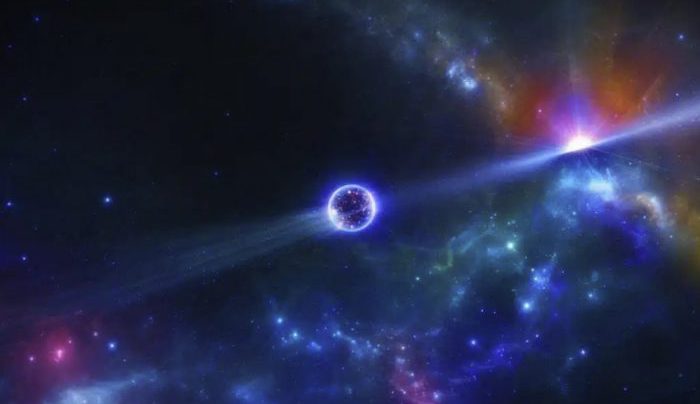A 220-petaelectronvolt neutrino, KM3-230213A, could mark the first direct proof of Hawking radiation — reshaping physics and dark matter research.
In February 2023, the scientific world was electrified by the detection of an unprecedented cosmic messenger — an ultra-energetic neutrino designated KM3-230213A. Measured at a staggering 220 petaelectronvolts, it shattered previous records and raised the possibility that Stephen Hawking’s most famous theoretical prediction — black holes radiating away their mass — may have just been glimpsed for the first time.
Neutrinos are ghostlike particles, produced in violent astrophysical events, that slip through matter undetected. Yet this one was extraordinary: its energy dwarfed all prior detections, forcing scientists to search for an explanation beyond supernovae or galactic nuclei.
Enter a bold hypothesis: physicists Alexandra P. Klipfel and David I. Kaiser (MIT) argue that the neutrino may have been the dying gasp of a primordial black hole, a relic from the universe’s earliest moments. Unlike stellar black holes, these miniature giants could be as small as mountains, formed from quantum fluctuations in the newborn cosmos. If Hawking’s equations are correct, such objects should evaporate over time via Hawking radiation, ending in a catastrophic burst of energy.
Klipfel and Kaiser calculate that a primordial black hole in its final nanosecond could unleash one sextillion neutrinos, precisely the kind of flood that might explain KM3-230213A. For the particle to reach Earth, the explosion would need to occur nearby in astronomical terms — within 186 million miles, near the Oort Cloud at the edge of our solar system.
The probability of this scenario is slim, around 8%. But with conventional explanations falling short, the hypothesis has gained traction. If validated, it would confirm Hawking’s vision, unify principles of quantum mechanics and general relativity, and even reshape the hunt for dark matter, which some theorists believe may be made of primordial black holes.
The implications ripple far beyond one neutrino. Proof of Hawking radiation would be a triumph for theoretical physics, echoing the insights of Einstein, Dirac, and Hawking, and may illuminate the path to a unified theory of the cosmos. It would also open new frontiers in our understanding of dark matter, one of the universe’s greatest enigmas.
For now, KM3-230213A stands as both a mystery and a milestone — a signal from the depths of space that may carry the key to the universe’s most fundamental secrets.





